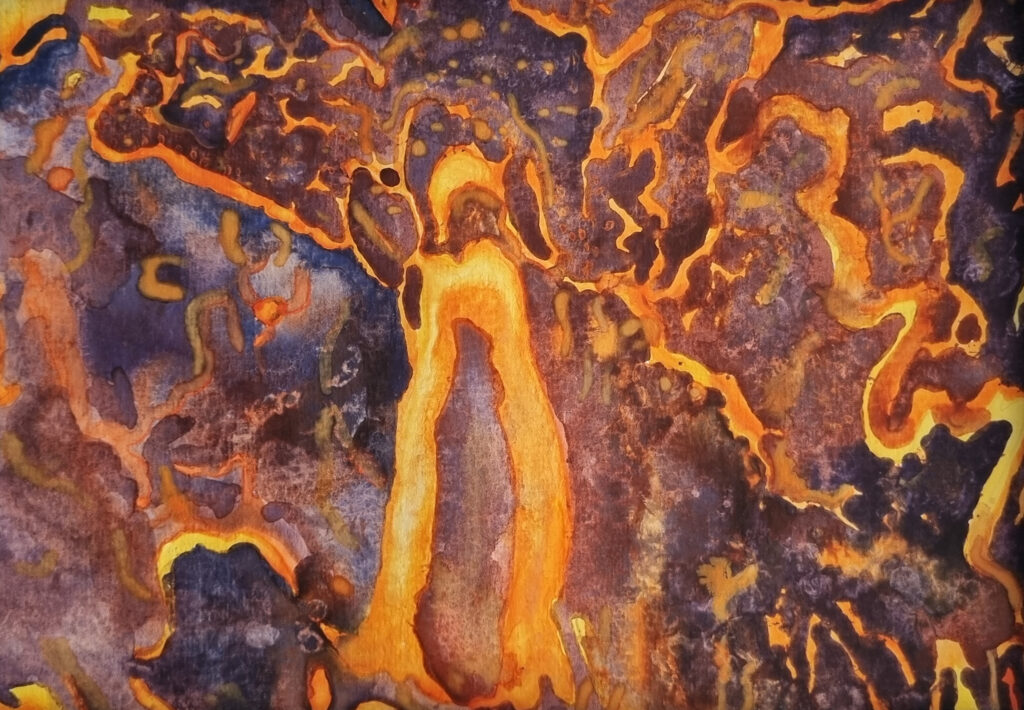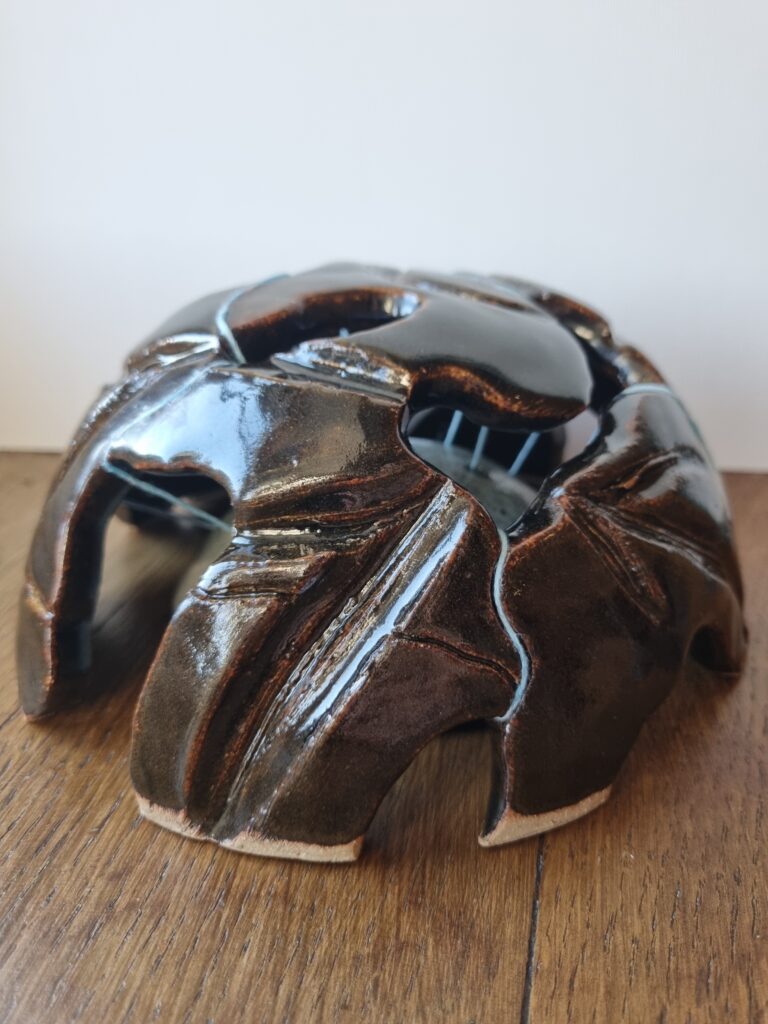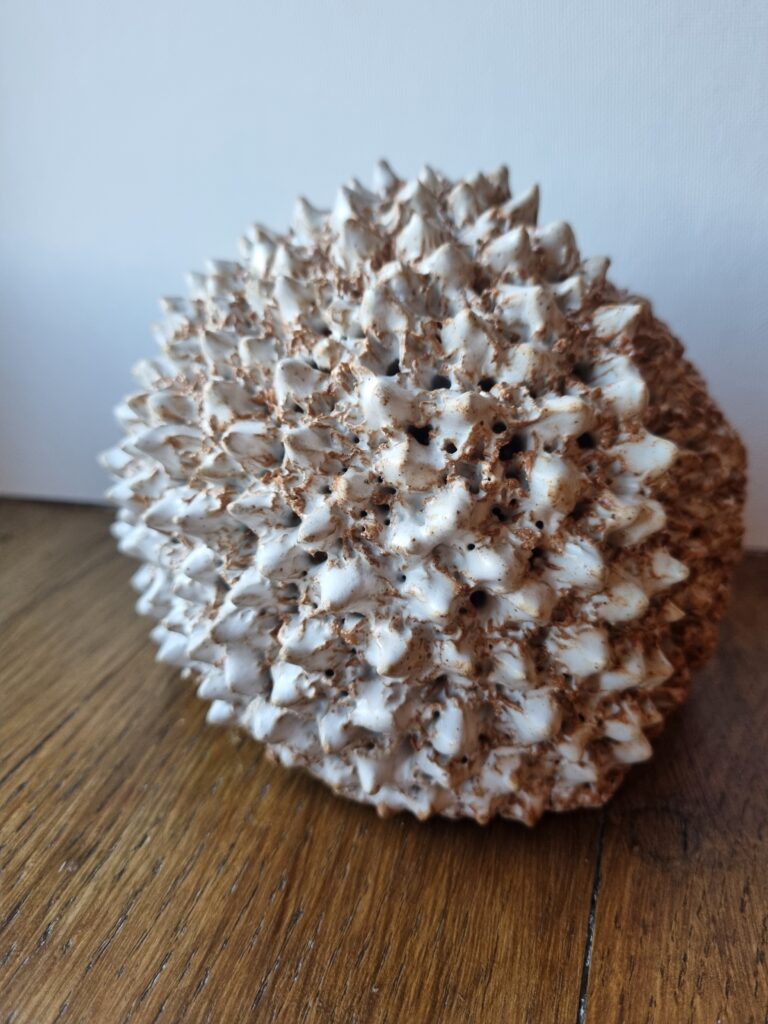Surge and Stillness (2024) is a watercolour painting that successfully replicates the rawness and power of volcanic tension through the flow of the lava and its clashing with its cooling and the creation of rock at the end.

There is a great contrast between the lava cooling (and the resulting rock) and the vibrant, fiery tones of the viscous lava. This, therefore, has captured the energy of the natural process of volcanic activity through the violent creation of magma freezing into basalt.
The technique has been well displayed in work as the watercolours flow and greatly mimic the textures of magma and basalt. The textures and the clashing between the formation of basalt and the flow of the magma showcase how these two forms have the capacity for both creation and destruction (in which magma may destroy what it falls upon yet create new earth (basalt)).
The work is titled “Surge and Stillness” which suggests a constant pendulum in this world that switches from explosive volcanic activity to the more peaceful formation of basalt and the resulting quiet in its aftermath. Therefore, they showcase a cycle that continues and sleeps, constantly changing the environment. The beautiful way that this has been painted allows us to enjoy the vibrant yet dangerous volcanic beauty.

Quake & Threads (2024) is a ceramic sculpture that exemplifies the necessity of tectonic shifts for life- in that, the textures on the sculpture replicate the effects of the shifts moving and earthquakes that happen on these lines. The form of this, itself, is fragmented and orderly rather than being simply chaotic destruction like the previous work (in which a volcano does not seem to discriminate where its magma and lava spit out and is extremely fast compared to the tectonic shift, which is slow and more controlled).
The edges of the fractures are jagged yet slightly smooth, a replication of the shifting. The smaller cuts into the work may suggest earthquakes, as they are less smooth and much more sudden. These ‘tectonic lines’ lock into each other, which may symbolise how they support life on this planet and, in the process, control the climate and life itself.
Every crack can be discerned as both needing destruction to create new life as new landscapes are created over time through the tectonic shifts as they control our continents and landmasses.

Eruption & Creation (2024) uses texturing to capture the force of the volcanic eruption, yet this texture is also a form of creation as it pushes out new material from the ground. This, therefore, implies that there is a balance between destruction and creation, as one brings the other. The spiked protrusions from the sculpture rise as though they are shards of basalt, which replicate the expulsion of the volcanic material from a volcano.
Moving onto the materiality of the sculpture, the use of ceramics (clay comes from the Earth) suggests that the sculpture itself could be considered an eventual creation of the volcanic eruption, as it may be composed of previous volcanic activity at some point in time.
Overall, the three artworks from the series have successfully explored how nature must use destruction to create and that these elements are balanced throughout tectonic and volcanic activity. This has been presented while also showcasing the beauty of these processes, especially with the vibrancy and the excellent textures of Surge and Stillness (2024). Thus, we are invited to understand that nature is not only a force for creation- but destruction, which in turn is a form of recycling the Earth into new forms.
